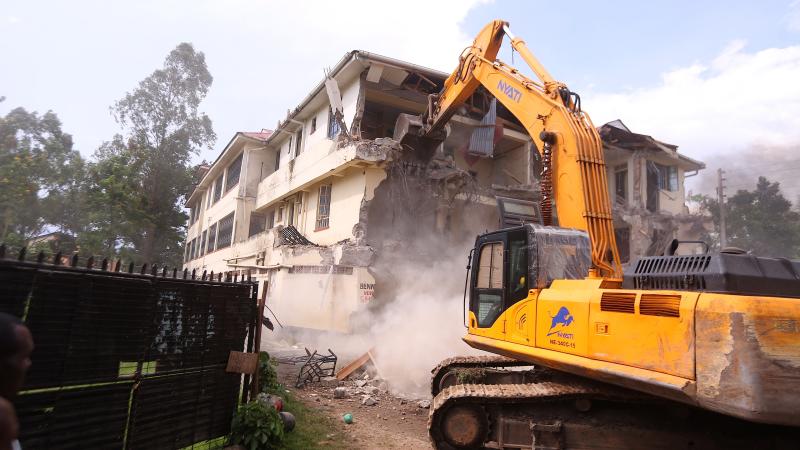A rental house at Migosi estate in Kisumu County being brought down by a bulldozer on April 20, 2021. The house is said to have been constructed along the sewer line. [Collins Oduor, Standard]
×
The Standard e-Paper
Join Thousands of Readers







